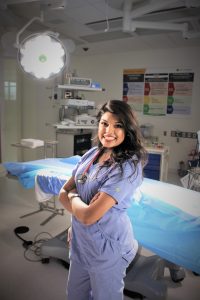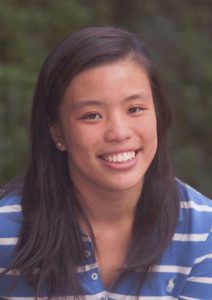
The Class of 2020’s Shevani Sahai, assistant district representative for the American Academy of Pediatrics’ Section on Pediatric Trainees
While our understanding of what it means to be a doctor has shifted over the centuries, nearly all have placed on doctors the unique responsibility of self-regulation: of ensuring that the medical tradition lives up to the high standards that have always shaped its evolution.
Such a mission requires leaders. And within VCU’s School of Medicine, more and more students are answering that call.
Susan DiGiovanni, M’84, H’87, F’89, senior associate dean for medical education and student affairs, notes that increasing numbers of SOM students are looking beyond their local classrooms toward leadership roles in the broader community.
“Today we see more and more students who are interested in health care policy, interested in the national level, interested in what’s going on internationally,” she says. “Physicians should definitely have access to leadership skills, and we do encourage our students to take on these roles as students so they can develop them in an environment where they can be mentored.”
DiGiovanni says leadership positions can be a valuable part of medical training. “I get to work on making lasting impressions on the way we practice medicine,” says Shevani Sahai, an M3 student at VCU’s Inova Fairfax campus who serves as an assistant district representative for the American Academy of Pediatrics’ Section on Pediatric Trainees.
For Emily Lee, an M2 who was recently elected to the American College of Physicians Council of Student Members, the leadership opportunity offers a chance to help shape other students’ perspectives and experience of medicine.
“ACP has a lot of resources for students,” she says. “The challenge is how to reach those students.”
Given the rigors of the medical curriculum, taking on a leadership role as a student requires a deep-seated passion for medicine. That’s certainly the case for both Sahai and Lee.
Sahai made the decision to attend medical school in high school, when she was accepted by VCU’s Guaranteed Admission Program in medicine.
“At 17, I basically knew I was going to be a doctor,” she says. And when it came to choosing pediatrics as her specialty, “It’s basically been written on my forehead.”
The American Academy of Pediatrics quickly proved influential in her training. “I felt like I had found my people,” says Sahai of her introduction to the academy. Sahai jumped at the opportunity to become involved in the AAP’s Section on Pediatric Trainees and was appointed to the role of medical student delegate last year, a position in which she acted as a liaison between the AAP and VCU’s School of Medicine.
From there, she moved up to her current role of assistant district representative, connecting students at all medical schools in Kentucky, North and South Carolina, Tennessee, and Virginia with the Academy; next year, she will be promoted to district representative.

The Class of 2021’s Emily Lee, who sits on the American College of Physicians Council of Student members
Lee was attracted to ACP’s role in the advocacy and reform of various policies, and the resources it offered. As a new medical student, she reflects, “I wanted to gain a broader perspective of medicine through better understanding the current policies at stake and how they can impact our careers and our patients in the future.”
The San Francisco native came to VCU via Wellesley College in the greater Boston area, where she developed an interest in medicine through laboratory research in pediatric hematology and oncology.
“I enjoyed not only learning about the science in a laboratory setting but actually understanding how the treatments can be applied to people and hopefully improve their lives,” she recalls.
On the MCV Campus, her interest in the ACP was encouraged through her membership in the Internal Medicine Student Interest group and faculty sponsor Steven Bishop, M.D., H’13.
VCU M.D.-Ph.D. student Chelsea Cockburn, who is serving as chair of ACP’s 13-member Council of Student Members, also helped spark Lee’s involvement in the group. While Lee is just getting started in her new leadership role, Sahai is already forging ahead with brainstorming what she describes as “innovative ways to change the way that we practice pediatrics.
“It’s so easy to think that as a medical student, I can’t cause people to change the way they practice medicine,” she said. But that, she points out, isn’t true. As an example, she cites one project by the AAP Section on Pediatric Trainees that works with police departments to provide free gun locks to families who have indicated to a doctor that they own guns.
Both Sahai and Lee hope to use their leadership roles to get more students involved in the profession, whether by taking advantage of opportunities to publish and engage in broader dialogues within the medical community or by harnessing the talents and time of students on particular issues at the national level.
At the end of the day, Sahai says, it’s all about “opening the door for more students like me.”
By Sarah Vogelsong